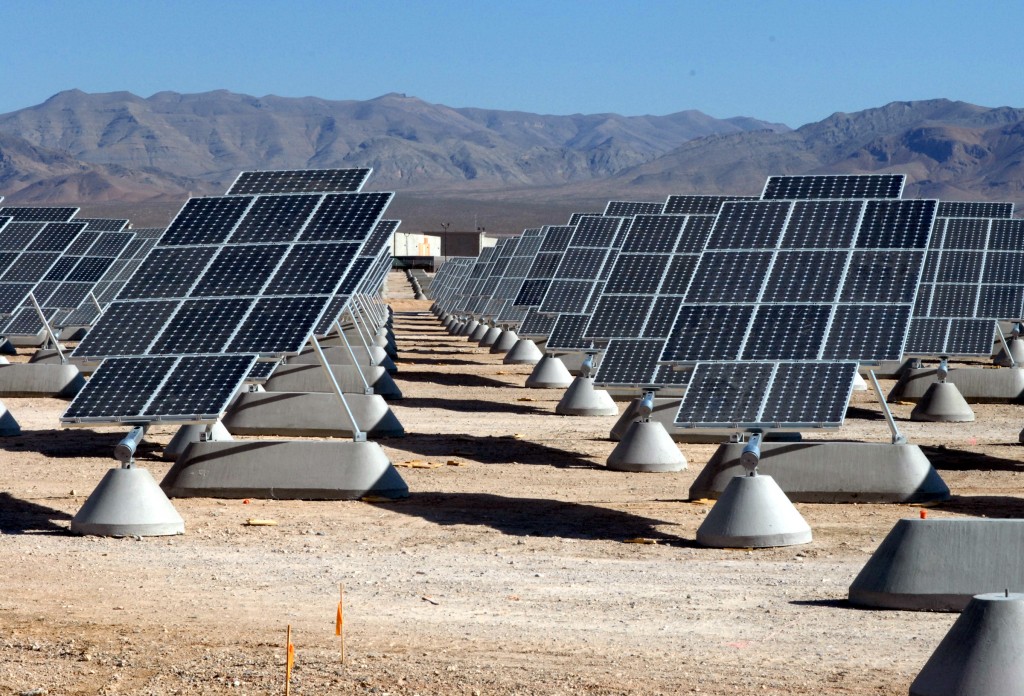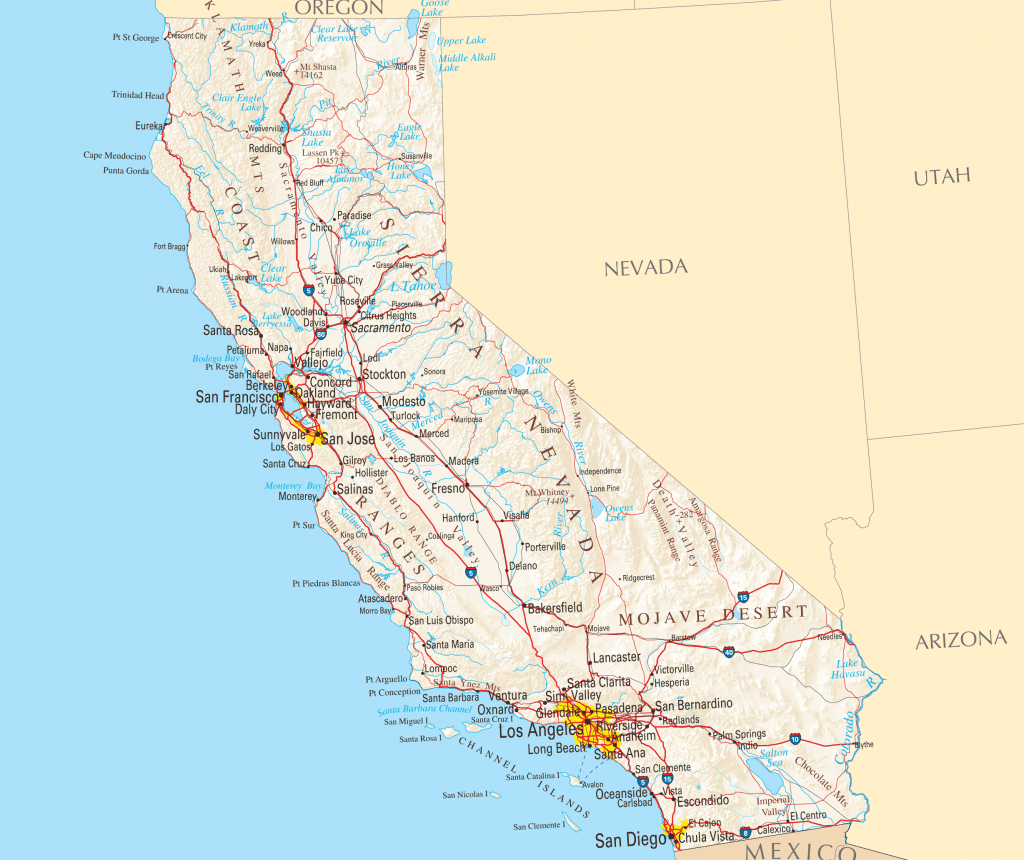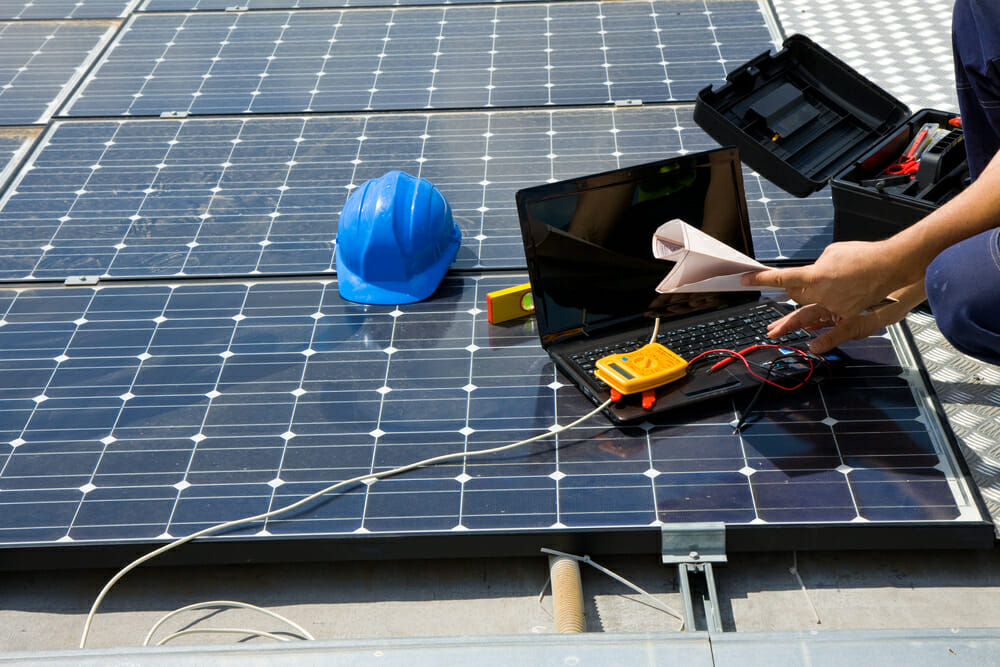How to Use the Solar Calculator
The best way to learn about local rebates, your home’s energy potential, and your eventual return on investment is to use our ModSun Solar Cost Calculator (see above). Enter your home address in the box, then click Check My Roof. You’ll get an instant picture of your roof’s productivity, your average energy expenses, and installation costs in your area—whether you decide to buy or loan. We’ll also provide system size recommendations and information about rebates and incentives you may be eligible for. Just select More Info under each purchasing strategy to learn more, and then connect with a solar pro.
What You Need to Know About Buying Solar Panels in California
Solar power in California has been growing rapidly because of the plethora of sunny days, widespread government and community support, rapidly declining solar costs, and a Renewable Portfolio Standard which requires that 33% of California’s electricity come from renewable resources by 2020, and 50% by 2030. In 2014, utility-scale solar power in California generated 9.9 million megawatt-hours, more than double the amount generated in 2013, and more than 5% of total utility-scale electrical generation in the state.
The cost of installing a photovoltaic system in a residential or commercial property in California has decreased 5% from 2013–nationally, the cost of solar has decreased by 53% since 2010. The large scale investments that California is making in solar power will undoubtedly bring about cleaner air, lower energy costs, and an increase in job opportunities.
Growth of Solar Industry in California
California leads the nation in the number of homes which have solar panels installed, totaling over 230,000. Many were installed because of the Million Solar Roof Initiative. In 2005, California Governor Arnold Schwarzenegger launched this initiative creating an incentive program to assist Californians in installing one million solar electric rooftops on homes and businesses throughout the state by 2018.
Driven by this initiative, by 2014 California had installed 4,346 MW of solar electric capacity–more solar than the entire United States installed between 1970-2011. At nearly $12 billion, this historic investment in solar power represents a 66% increase over 2013 and is expected to continue to rise. California is now home to 2,262 solar companies, providing 54,700 jobs throughout the state. There is enough solar energy installed in California to power 2,891,000 homes.
While California hosts the three largest photovoltaic facilities in the world–the plant in Riverside County desert is the largest in the world–many developers have been gravitating toward smaller solar farms. Solar farms are easier to build and usually have a smaller impact on species and ecosystems in California’s deserts. For example, the plant in Riverside County desert spans 3,800 acres near Joshua Tree National Park, and faced vehement opposition from environmental activists during its permitting process. In contrast, smaller projects built near cities will require far less transmission infrastructure, which is expensive to build and will pose far less environmental concerns.
Ongoing drought conditions in California have also prompted more residents and business-owners to consider solar options as opposed to popular renewable, hydroelectric power generation. Since the beginning of the drought, hydroelectric power generation has decreased by 46%. With 11,535 MW of solar energy, California currently ranks first in the country in terms of installed solar capacity. Arizona and Nevada round out the top three.
Large-Scale Solar Installations in California
- Desert Sunlight was completed in 2015 by developer. This photovoltaic project has the capacity to generate 550 MW of electricity–enough to power over 160,000 California homes.
- Several large retailers in California have made the investment in solar: including Walgreens, Johnson & Johnson, Walmart, and IKEA. Campbell’s Soup has installed one of the largest corporate photovoltaic systems in the state with 2,300 kW of solar capacity at their location in Sacramento.
- At 250 MW, Mojave Solar is among the largest solar installations in California. Completed in 2014, this solar power project has enough electric capacity to power more than 61,000 homes.
Relevant Legislation for Solar in California
- Solar Property Tax Exclusion Extended: In July, Governor Jerry Brown signed SB 871 extending the solar property tax exclusion until January 1, 2025. The continuation of this policy allows homeowners and businesses to install solar energy without a reassessment of their property taxes. The extension of this exclusion will also enable California utilities to achieve their renewable energy targets at a lower cost to ratepayers.
- The Solar Rights Act was created in 1978 protects consumer access to sunlight. This law prevents homeowners’ association and local governments from preventing the installation of solar systems.
- The Solar Shade Act, also created in 1978, provides limited protection to the owners of solar power systems by limiting the amount of shading from trees or shrubs on adjacent properties that could compromise the effectiveness of their solar systems.
Solar Incentives in California
California has created incentives, including rebates and net-metering policies, to encourage rooftop and other small-scale solar capacity. Thanks in part to those incentives, at the end of 2014, more than 2,300 MW of small-scale solar capacity had been installed on homes and businesses. It’s important to note that investing in these systems won’t get you “off the grid.” In fact, the incentives work hand-in-hand with the grid. Your new photovoltaic system will produce energy that flows back onto the grid, which they conversely draw from whenever their systems are not generating energy. Note: these grid-tied solar electric systems are not typically designed to provide back-up power when there is an electrical outage.
The California Solar Initiative (CSI) offers cash back for installing solar on your home or business. Managed by the California Public Utilities Commission (CPUC), the CSI provides incentives for photovoltaic system installations to customers of the state’s three investor-owned utilities (IOUs): Pacific Gas and Electric Company (PG&E), Southern California Edison (SCE), and San Diego Gas and Electric (SDG&E). The CSI Program provides upfront incentives for photovoltaic systems installed on existing residential homes, as well as existing and new commercial, industrial, government, non-profit, and agricultural properties within the service territories of the IOUs.
The CSI Program pays solar consumers their incentive either all at once for smaller systems or over the course of five years for larger systems. Systems smaller than 30 kW receive an upfront, capacity-based incentive that is calculated based on expected system performance, or the Expected Performance-Based Buy-down (EPBB). Systems 30 kW or larger receive incentives based on their actual performance over the course of five years, via a Performance Based Incentive (PBI).
CSI rebates are available for solar photovoltaic technologies (roof-mounted, ground-mounted and building-integrated PV), non-PV electric displacing systems (solar water heaters, solar space heating, and solar cooling systems), and non-PV electric generating systems (dish sterling, solar troughs, dish and lens, and concentrating solar systems of up to 1MW).
Unfortunately the rebates for all three IOUs are currently exhausted (November 2015) and the program is now closed. The CSI Program was designed to be responsive to economies of scale in the California solar market, so as the solar market grew, the cost of solar systems would decline, as would the incentives offered. Check back to see if the program re-opens as California strives to reach the ambitious goals in its Renewable Portfolio Standard by 2020.
Lesser Known Solar Incentive Programs in California
The are still incentives available for the usage of solar on new residential construction. The California Energy Commission’s New Solar Homes Partnership (NSHP) provides financial incentives and other support to home builders, encouraging the construction of new, energy efficient solar homes that save homeowners money on their electric bills and protect the environment. There are also CSI-Thermal rebates available for solar hot water systems that displace electricity or natural gas usage.
The CSI also has a program to bring solar energy systems to lower-income families, the Single-Family Affordable Solar Homes (SASH) Program. SASH intends to decrease the expense of owning a solar system by providing incentives that are larger than those in the general CSI program. SASH provides qualified low-income homeowners fixed, up front, capacity-based incentives to help offset the upfront cost of a solar electric system. To be eligible, applicants must: 1) receive electrical service from Pacific Gas & Electric (PG&E), Southern California Edison (SCE), or San Diego Gas & Electric (SDG&E); 2) own and live in their home; 3) have a household income that is 80% or below the area median income; and 4) live in a home defined as “affordable housing” by California Public Utilities Code 2852.
The Multifamily Affordable Solar Housing (MASH) program is an incentive program that is currently exhausted, but applicants on the waitlist will be reviewed in August 2015 and a decision will be made in the Fall of 2015 as to whether or not the program will be extended to new applicants. Established in 2008, the MASH Program provides solar incentives on qualifying affordable housing multifamily dwellings. The MASH program intends to stimulate the adoption of solar power in the affordable housing sector, while decreasing electricity use and costs without increasing monthly household expenses for affordable housing building occupants.
Incorporating a Solar Energy System Into Your Home
There are four main types of solar energy technologies: photovoltaic (PV) systems, concentrating solar power systems, solar water heating systems, and transpired solar collectors or “solar walls.” In California, PV systems are the most popular. A PV system that is designed, installed, and maintained well should last approximately 20-30 years. A PV system can be used to power your entire home’s electrical systems, including lights, cooling systems, and appliances. Modern PV systems can easily be incorporated into the aesthetic of both traditional and nontraditional homes. The most common practice is to mount modules onto a south-facing roof or wall. For homeowners that prefer a more minimalist look, PV systems can be installed to resemble traditional roof shingles.
The size of your solar system depends on a number of factors including how much electricity or hot water you use, the size of your roof, and how much you’re willing to invest. Also, do you want the system to supply your complete energy usage or to supplant a portion of your higher cost energy usage? You can contact a system designer/installer to determine what type of system would suit your needs.
Selecting a Solar Contractor in California
Solar installers are required to register with the Energy Commission’s Retailers/Installers List annually. Except for those systems that are self-installed, all systems must be installed by appropriately licensed California contractors in accordance with rules and regulations adopted by the California Contractors State Licensing Board (CSLB.) Installation contractors must have an active A,B,C-10, or C-46 license for photovoltaic (PV) systems. All systems must be installed in conformance with the manufacturer’s specifications and with all applicable electrical and building code standards.


